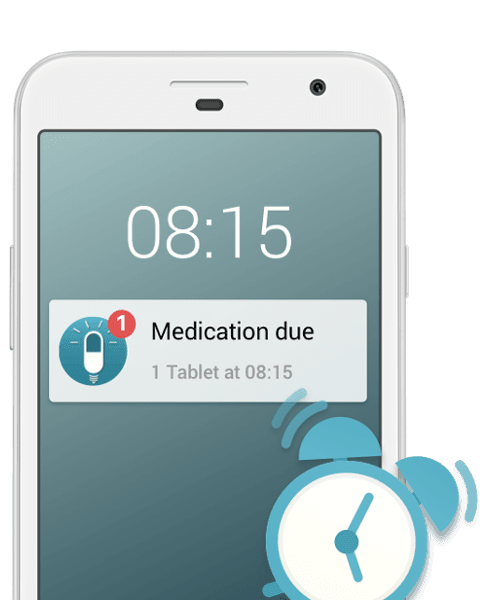Loss of eyesight is a fear for many people, particularly as the years go by. The idea of not being able to see our loved ones and a loss of independence caused by reduced vision is understandably frightening. Age-related macular degeneration (wet AMD) is an eye disease that doesn’t tend to cause complete blindness, peripheral vision is often preserved, but as the disease progresses the loss of central vision can make everyday acts like reading, driving, recognizing faces impossible. It is estimated that as many as 11 million people in the US live with wet AMD. While there is no cure, treatment can halt and even reverse vision loss. The first-line treatments for wet AMD are administered with injections into the eye. Those words will fill many people will dread and lead to the inevitable question: are there other options?
Wet AMD: What is Going On?
In wet age-related macular degeneration, fluid accumulates in the eye due to the growth of irregular, leaking blood vessels, which damages the retina and destroys the central field of vision. In contrast to the less aggressive form of macular degeneration, dry AMD, for which there are no treatments, the deterioration of vision caused by wet AMD can be often be stopped and, in some cases, partially reversed. Treatment options include injections, laser therapy, or surgery. Each treatment has advantages and disadvantages that may make them more or less suitable options for you.
Intravitreal injection
Drugs that are injected intravitreally (into the eye) are done so to avoid affecting other parts of the body because they work by preventing the growth of blood vessels. With wet AMD, it is the growth of abnormal and leaky blood vessels that leads to impaired vision. Injections are usually required once a month, although this may be adjusted depending on your response to the treatment
For most people, the thought of an injection into the eye is a scary one. However, the injection is into the vitreous body (the white of your eye), which is anesthetized and kept open to prevent blinking. Patients look to one side rather than directly at the syringe and many people report feeling no pain thanks to the anesthetic. The fear factor is often lost (or at least reduced) after one or two injections.
Treatment with injections – also known as anti-VEGF therapy because of the specific mechanism of action of the drugs used – is usually the first-line treatment for wet AMD and is widely considered to be the most effective for preventing and potentially reversing vision loss. Nonetheless, repeated injections are required, which may not be ideal for some patients, and there are risks (such as cataracts and infection), so some people may seek alternative options.
Thermal Laser Photocoagulation
Laser eye surgery to correct visual defects is now common practice. In treating wet AMD, the blood vessels responsible for the leaking are targeted and laser burns are intended to stop fluids escaping. However, this method is only effective on small legions and is, therefore, only beneficial in cases where the condition is diagnosed early. Additionally, laser photocoagulation will usually cause some immediate and irreversible central vision loss; it is over time that the benefit of the vision loss prevented outweighs this initial loss.
Another drawback of laser coagulation is that, even when it is successful, there is at least a 50% chance that leakage will occur again within 2 years.
These are often located directly under the center of the macula and cannot be treated by laser without destroying visual cells. Thermal laser photocoagulation is, therefore, only useful in exceptional cases.
Photodynamic therapy
Photodynamic therapy, which largely replaced laser photocoagulation, can treat blood vessels under the center of the macula as well as elsewhere in the eye. First, a light-sensitive drug, that is harmless alone, is injected into your bloodstream intravenously. This will reach the blood vessels in your eye that are responsible for the leaking. Non-thermal laser light is then shined into the eye, which activates the medicine. This causes blood clots that seal the leaky blood vessels.
Photodynamic therapy is necessary several times a year to temporarily slow down the loss of vision. Unfortunately, this treatment can only be applied in individual cases, as the success of the therapy depends, among other things, on the type of new vessel formation and the scar stage.
Surgical procedures
Surgical procedures are not often used to treat wet AMD today. However, in specific cases, a few different procedures may be used. One, called macular translocation, is a difficult and risky procedure that involves full retinal detachment and relocation to a healthier spot of the eye. It is rarely used because it is most effective in the early stages of wet AMD when other, safer, treatment options are preferred.
Surgery may also be necessary in cases of wet AMD with heavy bleeding, which can cause a sudden and severe loss of vision. This can require a procedure called a vitrectomy, in which a part of the eye called the vitreous is removed, which provides better access for other procedures to take place (such as removal of blood clots). Alone, these procedures are not effective in reducing vision loss. They may, however, improve the efficacy of anti-VEGF therapy. Like any eye surgery, though, there is a significant risk of complications.
You can read more about surgical procedures used to treat wet AMD here.
Alternative therapy offers
As with many other chronic diseases, AMD is also treated with therapies that have no scientifically proven effectiveness, for example:
- Rheopheresis
- Oxygen treatments
- Infusion treatments
- Gas therapy
- Acupuncture
- Homeopathic remedies, e.g. from organ extracts from eyes
In some cases even a cure is promised. Since age-related macular degeneration can lead to a temporary standstill of the disease even without treatment, it is also possible that an ineffective treatment attempt is interpreted as a success.
How do you best protect yourself against such dubious offers? Contact a trustworthy person: Talk to your doctor or get information from a patient organization that deals extensively with the topic of macular degeneration.
New therapeutic approaches
Since intravitreal injections are currently the most effective therapy, they remain the first choice in the treatment of wet age-related macular degeneration. However, there is a lot of research in this area and new treatments are on the horizon that would significantly reduce the burden of treatment for people with wet AMD - a promising future.
Here are other articles we think you may be interested in:
- A Glimpse into the Future of Treatments for Wet Macular Degeneration
- Siri Shortcuts: A Quick Path to Accessibility for Blind and Visually Impaired Users?
Would you like to learn more about anti-VEGF therapy for wet AMD? Our FAQ pages for some of the most effective treatments have been fact-checked by medical professionals:



